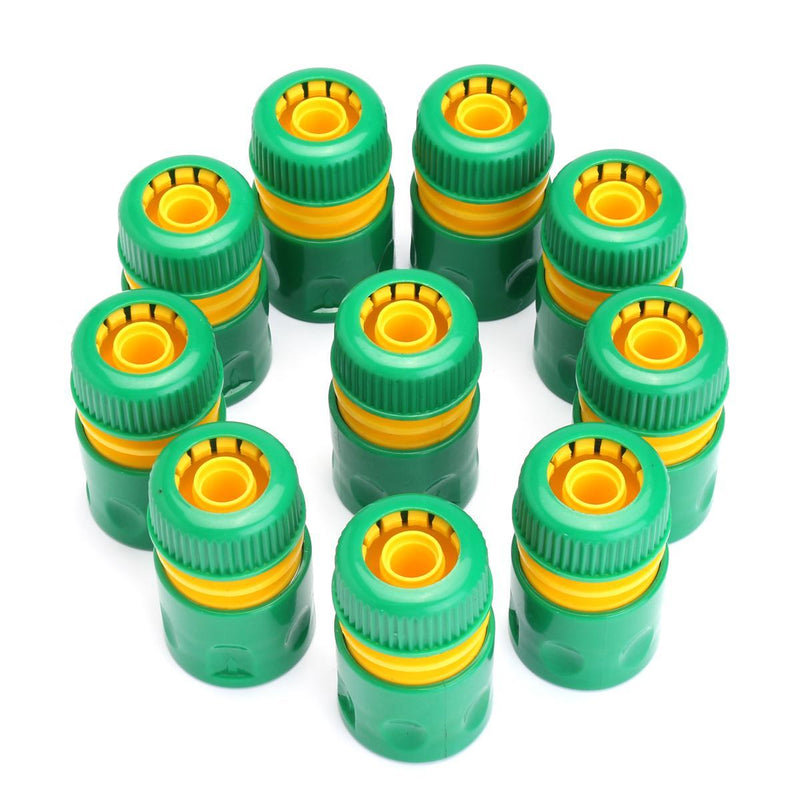


Overall, though a larger hose has the potential for a larger gallons per minute flow rate compared to a smaller hose. You’ll have to turn up your water faucet in order to achieve the same level of water pressure for a larger hose than you would for a smaller one. However, hoses with larger openings may have lower water pressure when the water comes out compared to smaller hoses. After all, if a hose has a wider opening, then it can deliver more water and faster than hoses with smaller diameter openings. Size matters greatly when it comes to hose function and efficiency. When measuring, the number should refer to the internal diameter, as this is size that needs to match the garden hose to a fitting nozzle or faucet.

Simply run the tape measure from the top of your hose’s opening to the bottom and record its diameter.
1 INCH WATER HOSE CONNECTOR HOW TO
How to Measure A Hoses Diameter? (A Summary)Ī tape measure is the best way to measure your personal garden hose’s size. You can see this article to learn how to measure the diameter of your hose. Meanwhile, the 5/8-inch variety is most common in household garden hoses. Out of all of these types, the ¾”-inch garden hose is the one most often used by professionals or high-quality garden hoses. These sizes are 3/8”, ½”, 5/8”, and ¾”, and each of these numbers if the internal diameter of each hose type. There are four primary sizes that you’ll find in most stores or with most standard homes. You can also see this post to learn just about everything else about garden hoses. What is the Standard Size of a Garden Hose Fitting? Here is an example of one such repair connector kit on Amazon that can go on any normal sized hose. If you ever want to replace these fittings then the best quality brass connectors can be purchased for a lot less than a brand new hose and most universal connectors will work just fine with either 5/8″ or 3/4″ hoses. Many cheap hoses come with low end fittings on either end that are easily damaged. This makes the threads themselves rather tough and they aren’t likely to break or bend easily. Most fittings are made from some durable material like brass. The threads are supposed to fit together in a screw-like manner to attach a hose to a faucet to allow water to come through without leaking or losing pressure. Threads are the small rings you’ll see on the outside of a faucet or on the inside of a garden hose’s fitting. First of All – What are Threads?īefore we can answer questions about standard sizes for hose fittings, you need to understand what we mean when we talk about threads. I tested four top-of-the-line hose connectors here to determine which was the best. Some are significantly better than others. I’ve always found keeping a few on hand at all times to be helpful…but connectors are not interchnagable. ► FYI – Quick connector fittings like these over on Amazon work with all standard hose sizes. There are some exceptions however so let’s explain hose fitting sizing in greater detail and I’ll show you what most of the common fitting and connector sizes are commonly used for.

It is rare however to find a residential hose fitting that uses a different thread pitch.
1 INCH WATER HOSE CONNECTOR PROFESSIONAL
Some professional or high-flow hoses are 3/4″ 11.5NH while some cheaper hoses are 1/2″ 11.5NH. Most residential garden hoses have a 5/8″ internal diameter with 11.5NH or 11.5 threads per inch. So what is the standard hose fitting size, and how do the various sizes work? After all, most hoses look the exactly same, shouldn’t they work without issue? Anyone who’s found that their hose doesn’t fit into the outdoor garden faucet or spigot has felt frustration and had the immediate realization that there are different size garden hose fittings.


 0 kommentar(er)
0 kommentar(er)
